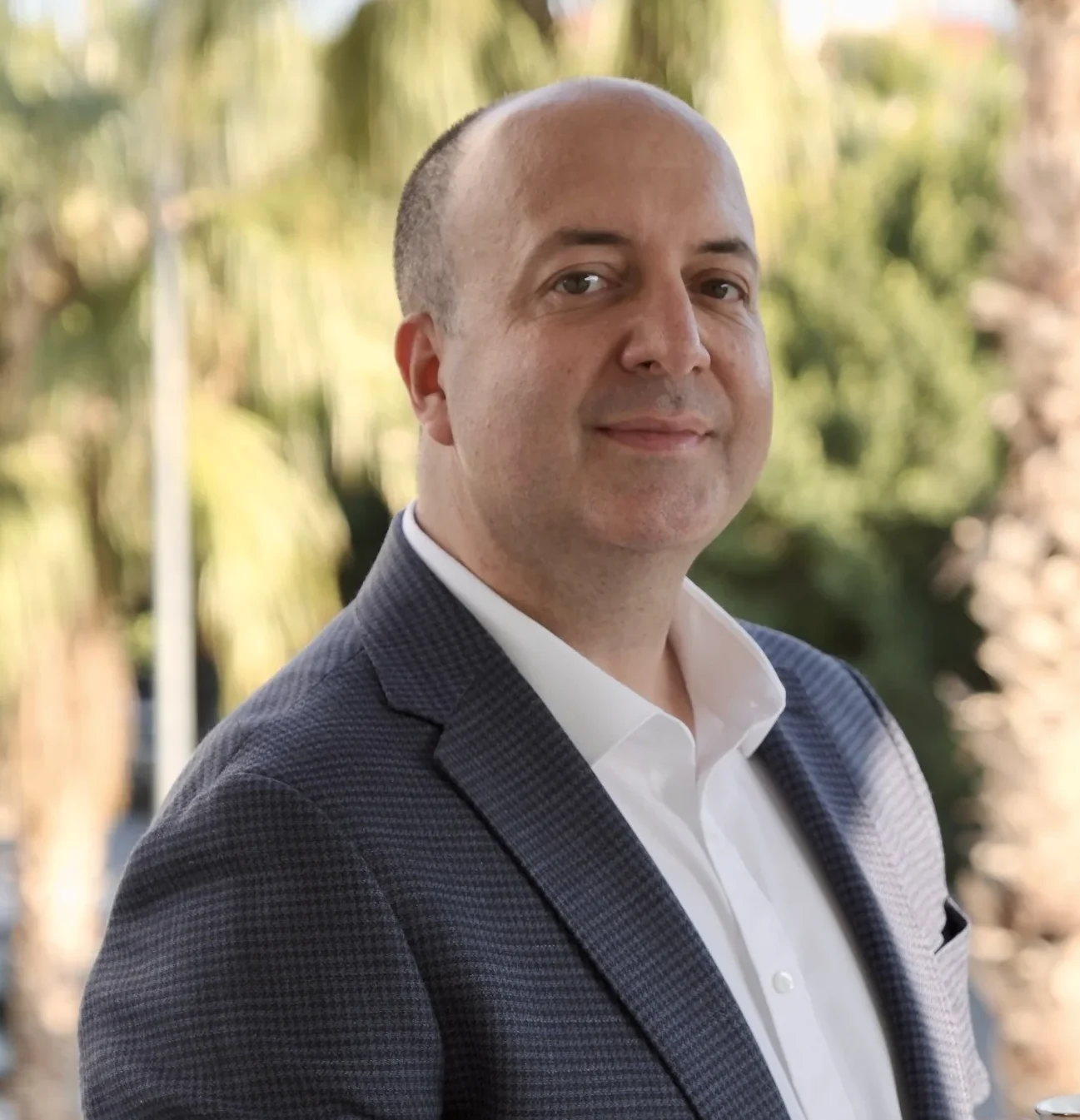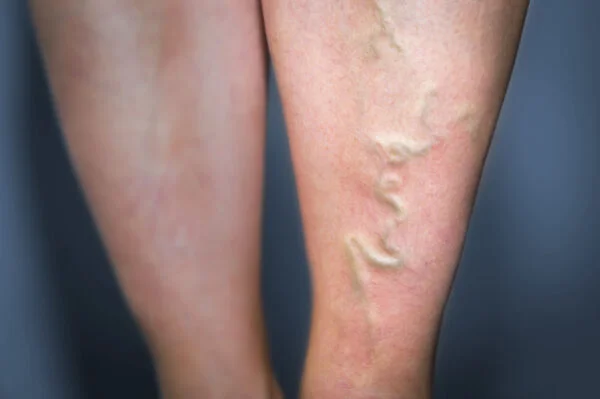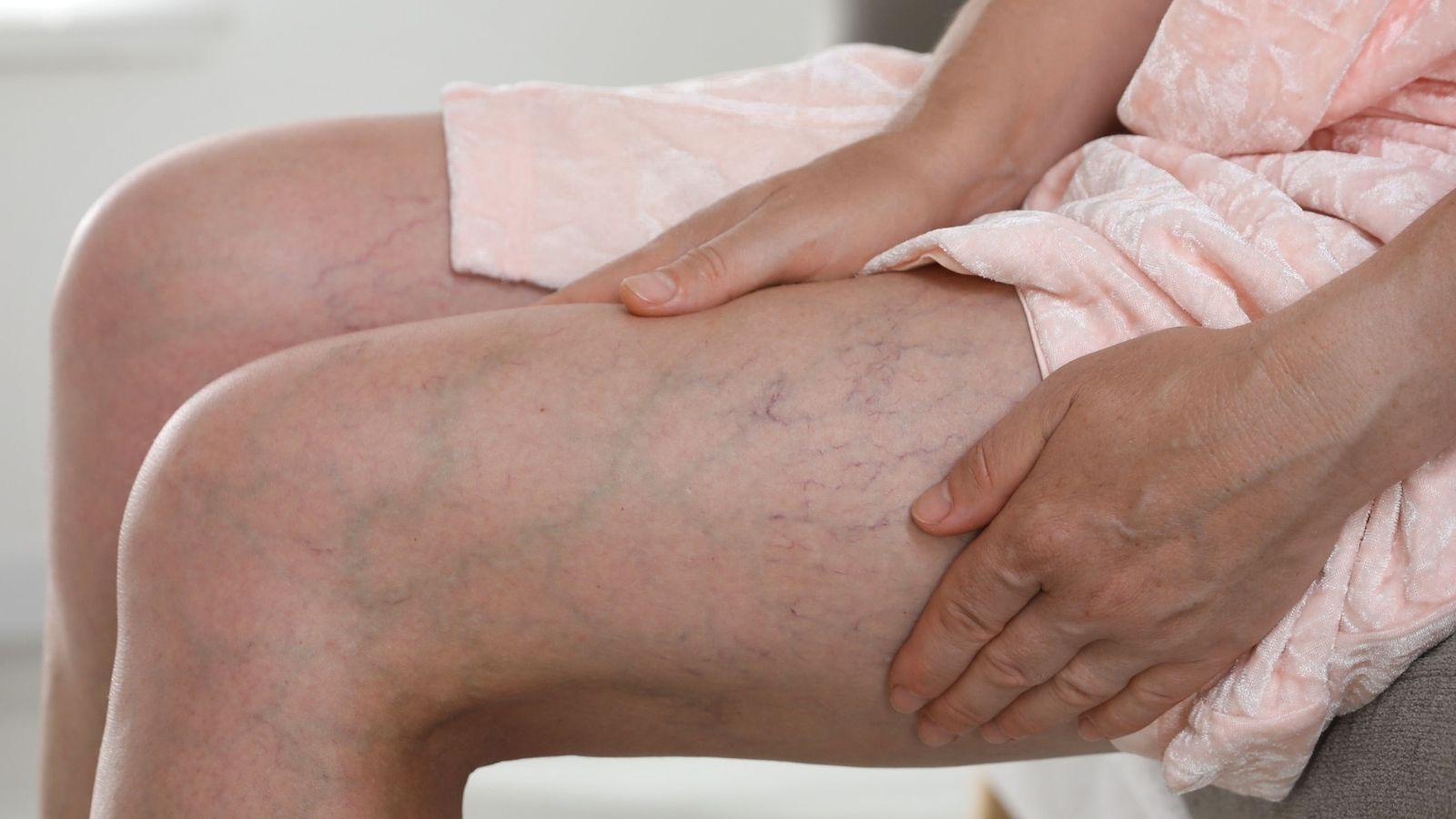Varicose vein treatment prices are determined directly according to a treatment plan tailored specifically for each patient. Therefore, there is no fixed, single answer to this question. The total cost is shaped by many variables such as the technological level of the modern treatment used (differences between non-surgical methods), the current stage of the disease, and its extent in the legs. The number of veins to be treated and the scope of the sessions to be performed are the main factors that directly affect the amount to be paid. This variability explains why the price range can be so wide.
Is the cost of delaying treatment or not getting treated higher?
This is perhaps the most important question. Varicose veins are seen by many as only an aesthetic, i.e., cosmetic issue. In reality, varicose veins are the visible result of a progressive vascular disease called “Chronic Venous Insufficiency” (CVI).
If left untreated, this condition goes beyond mere “appearance.” As the process advances, constant leg pain, a feeling of heaviness, swelling (edema) that worsens in the evening, and nighttime cramps begin. In more advanced stages, the skin changes color and hardens, and eventually open, oozing, painful wounds known as “venous ulcers” may develop, which can remain unhealed for months or even years.
At this point, the concept of “cost” should be divided into two:
- Direct Cost: The fee paid for treatment.
- Indirect Cost: The price of not receiving treatment.
This often-overlooked indirect cost is actually much more significant. Chronic venous insufficiency directly affects quality of life and work capacity. “Loss of productivity”—inability to focus on work due to constant pain or leg discomfort, decreased efficiency, or the need for frequent sick leave—is the greatest societal cost of this disease. Studies show that in the U.S. alone it leads to millions of lost workdays per year.
When the disease progresses to venous ulcers (the most advanced stage), costs multiply. Care of these wounds requires not only venous treatment but also months of regular dressings, specialized wound-care products, and sometimes additional surgical interventions.
In conclusion, yes; in most cases, the cost of effectively treating the disease early with modern methods is far lower than the total cost of managing it chronically for years or attempting to treat end-stage complications (such as ulcers).
What criteria matter for “success” when evaluating treatment price?
Years ago, there was only one metric for the “success” of varicose vein treatment: technical success. In other words, “Was the problematic vein successfully closed or removed?” If yes, the treatment was considered successful.
This approach is no longer valid. Consider this: your vein was technically closed, but your pain, swelling, or cramps persist. Is that a real success? Clearly not.
In contemporary medicine—exactly as emphasized by leading vascular surgery societies (like SVS and AVF)—“success” and “value” are now measured by the patient’s quality of life. Whether a treatment is “valuable,” i.e., worth the cost, is determined by how much “quality” it returns to the patient’s life.
This is referred to as “Quality-Adjusted Life Years” (QALYs). A treatment should not only relieve symptoms but also restore a high-quality life—free of pain, cramps, and swelling—allowing you to move as you wish.
Therefore, when evaluating the price of a treatment, the question should be: “How much ‘quality of life’ am I purchasing in return?” A method that seems very “cheap” initially is actually the most “expensive” in the long run if it does not fully relieve your symptoms or if the problem recurs shortly after. Modern economic evaluations look at the total benefit the treatment provides over a five-year period—not merely the price on the day of the procedure.
How should the prices of classic surgery and modern methods be compared?
The biggest revolution altering the cost structure of varicose vein treatment has been the shift from classic surgery (vein stripping) to modern, non-surgical, endovenous methods (Laser—EVLA, Radiofrequency—RFA). The cost structures of these two approaches are as different as night and day.
- Classic Surgery:
This method requires general anesthesia or spinal anesthesia. Through an incision in the groin or behind the knee, the problematic vein is identified, ligated, and pulled out using a wire called a “stripper.” It is an invasive procedure requiring a hospital and operating room environment.
- Modern Ablation (Laser/Radiofrequency):
With EVLA/RFA, the vein is not removed. Under ultrasound guidance, a fine fiber (laser) or catheter (radiofrequency) is inserted into the vein through a needle puncture. The vein is gently closed from within using thermal energy and is gradually resorbed by the body. This can be done under local anesthesia in a clinic setting.
Now to the critical point in comparing their costs. Detailed cost analyses have revealed a surprising fact: the direct procedural cost of modern methods (i.e., the cost of the advanced single-use fiber/catheter) can sometimes be higher than the direct cost of classic surgery.
If modern methods are more expensive, why have they become the global standard so rapidly?
The answer lies in the “indirect” or “societal” costs—the unseen side of the equation. When we expand the analysis beyond the hospital bill to include the patient’s entire recovery period, the picture changes completely:
Recovery Time: Classic surgery, due to general anesthesia and the nature of the operation, requires a more painful and longer recovery. Returning to normal life and work can take weeks.
Return to Work: With modern ablation methods (Laser/RFA), patients leave the clinic walking immediately after the procedure. Recovery is very rapid. An office worker can often return the next day; those with more physical jobs can return within a few days.
When economic models include these indirect societal costs—“lost workdays,” “reduced productivity,” and “prolonged recovery”—the total cost of modern ablation methods is clearly much lower than classic surgery.
The essence is this: the modern varicose vein treatment model is not a cost-saving model but a cost-shifting model. To eliminate long-term indirect societal costs (lost productivity, prolonged recovery), it strategically accepts a short-term direct procedural cost (high-tech single-use devices).
What determines a treatment’s long-term cost?
A treatment’s total cost is not limited to the expenses on the day of the procedure. Two main factors can shape the overall long-term economic picture: complications and reintervention rates.
Post-Procedure Complication Costs
- Classic surgery (stripping) is inherently more invasive and thus carries certain risks:
- Surgical site infection
- Hematoma (blood accumulation at the incision site)
- Nerve injury (persistent numbness around the incision)
- More post-procedural pain
Each of these complications entails additional physician visits, medications (e.g., antibiotics), or sometimes further interventions—all of which add cost. Modern methods like Laser (EVLA) have a much lower likelihood of causing such surgical complications. Every avoided complication is, in effect, a direct cost saving.
- Durability and Reintervention (Recurrence) Cost
How “durable” the treatment is—i.e., whether it fails and requires another procedure (reintervention)—is the most important determinant of long-term cost. The data here are more nuanced. Large meta-analyses show that, over five-year follow-up, both Laser (EVLA) and classic surgery yield very similar results regarding recurrence rates.
These findings tell us this: the primary economic advantage of modern endovenous ablation (Laser/RFA) versus surgery is overwhelmingly concentrated in the short term. Those advantages are:
- Very rapid recovery
- Swift return to work (reduced societal cost)
- Fewer post-procedural complications
As for long-term durability, when performed correctly, both modern methods and classic surgery are similarly successful. This underscores how critical it is to perform modern methods properly and expertly so as not to lose their short-term gains.
What are the price differences within non-surgical methods themselves?
“Non-surgical treatment” is not a single method; it’s a family of techniques with different technologies, advantages, and therefore different cost structures.
- Laser (EVLA) and Radiofrequency (RFA) — Thermal Methods
Among current treatments, these are considered the “gold standard” and the reference point in economic analyses. In comprehensive five-year cost-effectiveness models, Laser (EVLA) is consistently identified as the most cost-effective option (i.e., delivering the best long-term outcomes and quality of life for the money spent). Radiofrequency (RFA) is typically ranked a “very close second.” The main elements determining their cost are:
- Capital equipment (Laser or RFA generator)
Single-use fiber or catheter per patient
Tumescent anesthesia (the local anesthetic fluid infused around the vein)
Adhesive (Cyanoacrylate Closure—CAE) — Non-thermal Method. Its biggest advantage is that it does not require “tumescent anesthesia” (i.e., large-volume fluid injections around the vein). This shortens procedure time and completely eliminates the (already very low) risk of heat-related nerve injury. In our country, it is lower-cost.
- Foam Therapy (Ultrasound-Guided Foam Sclerotherapy — UGFS)
Foam therapy has a completely different economic profile.
Cost Advantage: The initial procedure cost (primarily clinician time, ultrasound, and the foamed agent) can be lower than all other methods, making it appear “cheap.”
Cost Disadvantage: Its primary economic downside is a significantly higher reintervention (recurrence) rate compared with all other procedures. The treated vein has a higher chance of reopening (recanalization), and the disease is more likely to recur.
Cost-Effectiveness Position: These higher recurrence rates mean the initial cost savings are lost over time. Consequently, in five-year models, foam therapy is not considered a cost-effective option.
What core procedural costs influence the treatment price?
The price quoted for a treatment is actually a package of multiple services. Three main technical components affect the total cost: anesthesia, setting, and materials used.
Impact of Anesthesia Choice on Price
This is one of the biggest drivers of cost.
- General Anesthesia (or Spinal Anesthesia): Mandatory for classic surgery. It substantially increases cost.
- Cost drivers include:
- Anesthesia physician and team fees
- Expensive anesthetic drugs
- Mandatory post-anesthesia care unit (PACU) monitoring and staffing
Local Anesthesia (and Tumescent Anesthesia): The standard for modern methods (Laser, RFA). It reduces total cost by eliminating PACU time and the anesthesia team cost.
Impact of Treatment Setting (Hospital/Clinic) on Price
This correlates directly with the type of anesthesia.
Hospital Operating Room: Procedures requiring general anesthesia (classic surgery) must be performed here. Hospitals have very high overhead. OR usage fees, inpatient room costs, and larger staffing are reflected in the bill.
Clinic / Ambulatory Care Center: Modern methods (Laser, RFA, Adhesive), which can be done under local anesthesia, can be safely performed in a clinic or office setting. This eliminates hospital-specific overhead (OR rental, bed fees, etc.) and significantly optimizes total cost.
Impact of Single-Use Medical Devices on Price
Modern varicose vein treatment’s cost structure depends on high technology. The primary component of procedural cost is the “Single-Use Device” (SUD) consumable.
- Laser fiber for EVLA
- RFA catheter for radiofrequency
- Special application kit for adhesive closure
The core economic logic of modern venous intervention is a trade-off: the specialist strategically accepts a high, fixed cost for advanced single-use technology in order to eliminate high, variable hospital/general anesthesia/PACU costs.
How does the patient’s condition (severity of varicose veins) affect the price?
Treatment cost is not a single fixed price identical for every patient; it varies directly with the complexity of the patient’s condition. To classify this complexity, the international CEAP (Clinical–Etiological–Anatomical–Pathophysiological) system is used.
Within this classification, the “C” (Clinical) score (from C0 to C6) is the primary determinant of resource utilization—and therefore price.
- Stage C2: Visible varicose veins in the leg. Most cost-effectiveness studies are built around this group. A standard Laser/RFA treatment is planned.
- Stage C6: The most advanced condition with an active venous ulcer.
- Treating a C6 patient (with an ulcer) is far more complex and costly than treating a C2 patient (with visible varices only), because the C6 patient requires not only endovenous ablation (e.g., Laser) but also additional therapies that may last for months.
These additional cost items include:
- Regular and frequent wound care
- Advanced wound-care products and dressings
- Additional procedures for surgical debridement of the wound
Do additional procedures for visible surface veins change the cost?
Yes—this is one of the most important factors determining total cost.
Modern ablation methods (Laser, Radiofrequency, Adhesive) are primarily designed to treat axial reflux—the source of the problem (the main superficial vein inside). These procedures correct valve failure and stop backward flow.
However, they do not magically eliminate the tortuous, bulging surface branches (varicose tributaries) just under the skin.
Therefore, a complete treatment (addressing both the source and appearance) usually requires adjunctive procedures to remove or eliminate these visible veins as well.
- Ambulatory Phlebectomy (AP): Under local anesthesia, the bulging veins are removed through tiny (1–2 mm) skin punctures using specialized instruments.
- Adjunctive Sclerotherapy: Foam or liquid sclerotherapy (injections) may be needed for the remaining smaller telangiectasias or reticular veins.
In summary, the total resource cost a patient needs is usually a package of treatments. Pricing should include not only the cost of closing the main vein but also the cost of any adjunctive procedures (phlebectomy or sclerotherapy) required by the patient’s specific anatomy.
How is the price calculated for treatment of both legs?
Venous insufficiency—i.e., varicose vein disease—is often bilateral, not unilateral. This confronts the specialist and the patient with a key resource-allocation decision: treat both legs in a single session (simultaneously) or in two separate sessions (staged)?
- Staged Treatment: One leg is treated first, and after a while (a few weeks or months) a second procedure is scheduled for the other leg. This can mean two separate procedure days, two separate preparation processes, two separate recovery periods, and potentially twice the consumable cost (e.g., two separate laser fibers). The procedure time per session is shorter, and the immediate post-procedure period is more comfortable.
- Simultaneous Treatment: Both legs are treated in the same session, in a single visit.
From the standpoint of resource efficiency and total cost, treating both legs at the same time is often more cost-advantageous. A single visit, a single preparation period, and (depending on the technology used) sometimes savings in consumables can be achieved. However, the longer procedure time, the difficulty of walking post-procedure with both legs bandaged, and the potentially increased risk of thrombosis are disadvantages.

Op. Dr. İlker Zan is a cardiovascular surgeon who has been specialized for many years in vascular diseases and phlebology (varicose and venous disorders). Between 1995 and 2001, he studied at the Gaziantep University Faculty of Medicine and subsequently completed his cardiovascular surgery residency at the Dicle University Faculty of Medicine Hospital. Since 2011, by performing minimally invasive (endovenous) varicose vein treatments, he has become one of the pioneering names in this field in Türkiye.
In 2019, with the establishment of the Dr. Zan Varis Clinic in Alanya, Dr. Zan introduced modern phlebology practices to the region and, as of 2025, he continues to provide services at his new clinic in Antalya. At his clinic, he offers individualized diagnostic and treatment plans for each patient and provides solutions with endovenous laser treatment (EVLT), radiofrequency (RF) ablation, foam treatment, sclerotherapy, CLACS, and echo-guided sclerotherapy—minimally invasive methods that allow painless, scar-free treatment and rapid recovery.
Dr. Zan approaches varicose veins not merely as a cosmetic issue, but as a serious vascular health problem. With a scientific, ethical, and patient-centered approach, he aims to improve his patients’ quality of life and, as a member of the National Society of Vascular Surgery and the European Society for Vascular Surgery (ESVS), he provides treatment in line with international standards.



